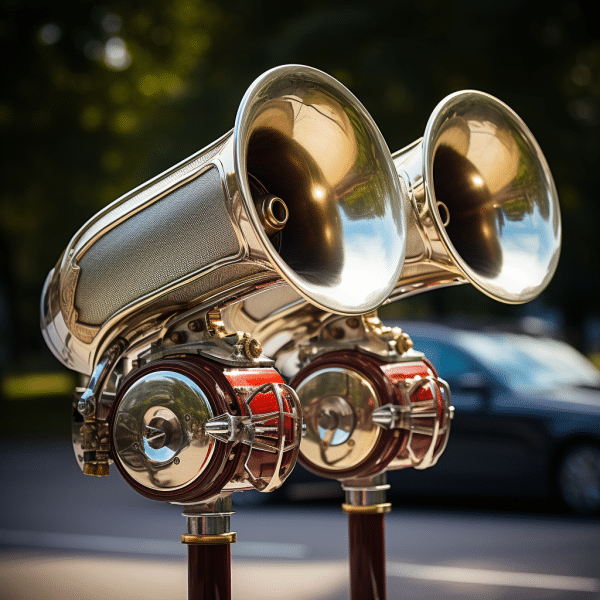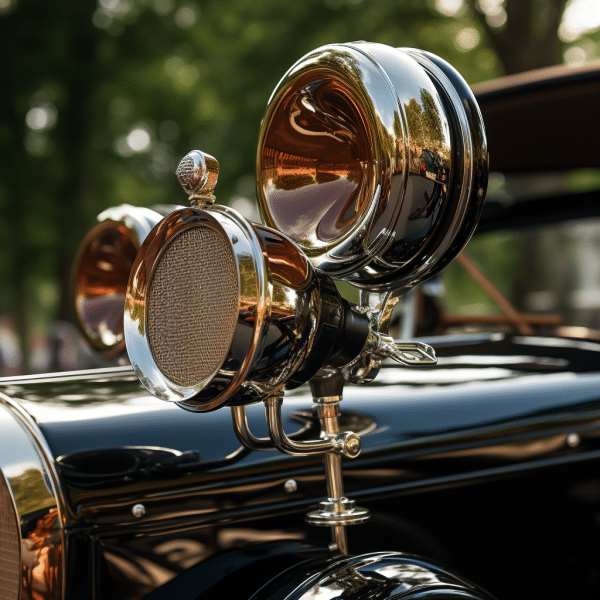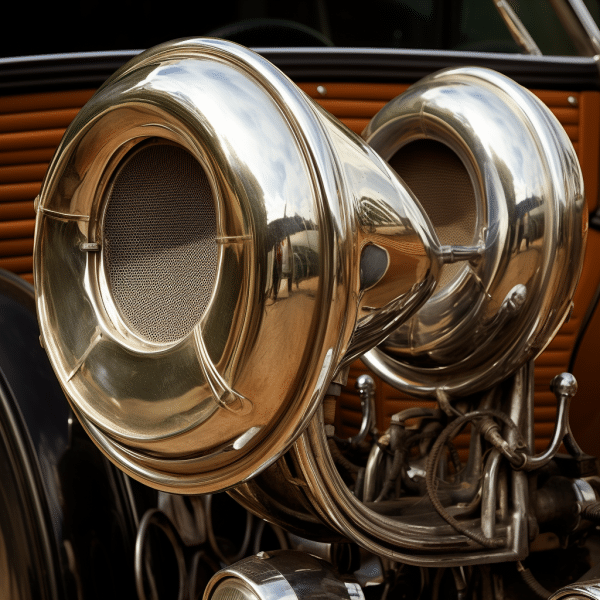
Exploring the Fascinating World of Antique Car Horns

Introduction to Antique Car Horn
Antique car horns, a topic worth exploring! These vintage artifacts evoke nostalgia and showcase past automotive engineering. Let us appreciate their historical significance.
In olden days, car horn options were limited. Antique car horn played a crucial role in safety and communication on roads. Made of brass or nickel-plated bodies, these horns emitted distinctive sounds.
What makes antique car horn unique is their craftsmanship. Intricate designs transformed them into works of art. From engravings to motifs, each horn has its own charm and character.
If you own an antique car horn or want to add one to your collection, here are some tips:
- Clean and polish regularly. This preserves shine and prevents damage.
- Handle with care due to delicate nature. Avoid harsh weather and rough handling. Treat them as exquisite pieces!
For restoration or repair, seek expert advice. Antique car horns require specialized knowledge and skills. Consulting professionals for vintage automobile restoration maintains authenticity and value.
From alerting pedestrians to scaring off thieves, antique car horns have been multitasking long before smartphones!
History of Antique Car Horns
The history of antique car horns starts in the early days of auto history. These vintage honkers, with their unique shapes and sounds, have been essential for safety on roads. As autos got popular in the late 19th century, inventors and engineers looked for ways to warn pedestrians and drivers of their presence. This is how the car horn came to be.
Early car horns were simple devices, just rubber bulbs to be squeezed to make noise. But as car tech advanced, so did these auditory warning systems. Manufacturers experimented with materials and designs to improve performance.
One big development was electric horns in the early 1900s. These used electromagnets to vibrate metal diaphragms or reeds, creating louder and more distinct honks.
An inventor called Miller Reese Hutchinson patented the Klaxon Horn in 1914. It had a rotating cogwheel that struck a metal diaphragm when an electric current activated it. It was a hit because of its iconic “ah-ooo-ga” sound, which is now linked to vintage autos.
Antique car horns have not only been safety devices, but symbols of auto nostalgia and craftsmanship. Collectors love these artifacts for their historical value and aesthetic appeal.
The history of antique car horns shows the ingenuity and passion of early auto fans who made roads safer and left behind a legacy for future generations. So, the next time you hear that classic “ah-ooo-ga” sound, appreciate the story behind the antique car horn.
Types of Antique Car Horns
Antique car horns are full of different types, each a reflection of the craftsmanship and innovation of its time. Let us explore some of these amazing horn designs!
- Bulb Horn – The oldest type, manually operated by squeezing a rubber bulb.
- Klaxon Horn – A popular horn in the early 1900s, producing a distinct “ah-oo-ga” sound.
- Oogah Horn – An iconic horn known for its deep, low-frequency sound like a foghorn.
- Musical Horn – Used on car trucks before WWII, for a special “toot-toot” sound.
- Whistle Horn – Found on cars and trains, with a shrill, high-pitched whistle.
These horns add a hint of nostalgia to antique car collections. In the past, horns were not just decorations, but also a way to warn pedestrians, horse carriages, and other vehicles of an approaching car. Collecting antique car horns is like treasure hunting – instead of gold and jewels, you’re looking for honks and toots!
Collecting Antique Car Horns
Rarity and variety? Antique car horns come in many styles and designs. From bulb horns to electric sirens, collectors can find them all.
Plus, each horn tells a tale of how transportation and engineering evolved. By collecting them, we keep history alive!
Many horns feature ornate designs – crafted by skilled artisans. They strike the perfect balance between aesthetics and functionality.
Collecting antique car horns also creates a community of like-minded individuals. It’s a great hobby that brings joy!
Moreover, the value of each antique car horn varies due to rarity, condition, and brand reputation.
For instance, the Ford Model T “Klaxon” horn introduced in 1908 revolutionized the auto industry. It was affordable and had a distinctive sound, earning it an iconic status!
Restoring and maintaining antique car horns is a must. After all, nothing says ‘move’ like a rusty century-old honk!
Restoring and Maintaining Antique Car Horns
Do you want to preserve antique car horns? Here’s a guide!
- Research the horn’s make and model.
- Clean surfaces with a soft cloth.
- Inspect the internal mechanisms.
- Replace damaged parts.
- Connect to power source and test the sound.
- Put a protective coating on the horn.
- Store safely.
- For more details, ask experts!
Martin found an awesome brass car horn at an estate sale. He restored it himself! He proudly showed it off at classic car events. His passion for vintage cars earned him respect from other enthusiasts.
Restoring and maintaining antique car horns is rewarding and keeps their legacy alive. Enjoy these relics and let everyone know you’re stuck in traffic – in style!
Displaying Antique Car Horns
To give an idea of displaying antique car horn, let’s explore a table. It shows the types of horns, their material, and design.
| Horn Type | Material | Design |
|---|---|---|
| Bulb Horn | Brass | Circular shape with long tubing |
| Squeeze Bulb | Rubber/Bronze | Small size with rubber squeeze bulb |
| Trumpet | Chrome | Long and straight with trumpet shape |
| Klaxon | Steel/Brass | Goose-like honk with hand lever |
These horns feature intricate designs. From the classic circular shape of the bulb horn to the elegance of the long and straight trumpet horn. Each design has its own charm and uniqueness.
For displaying the horns, create an arrangement that is easy to view. Place them on a shelf or mount them on a wall. Showcase each horn’s distinct features and complement the arrangement.
Antique car horn can be used as an alarm clock. It will wake you, your neighbors, and maybe even the entire neighborhood.

Conclusion
The antique car horn is an intriguing item of history. It adds charm to vintage vehicles and reminds us of the development of automotive technology. Its distinct sound and intricate design make it a collector’s dream.
It gives us a look into the past. The horns show the craftsmanship and attention to detail of early automobiles. Intricate engravings, hand-painted designs – these horns are works of art!
The mechanism behind these horns is also interesting. Unlike modern car horn, antique car horns often relied on compressed air or manual operation. It’s an extra layer of fascination for those interested in the engineering of vintage vehicles.
To keep these antique car horn looking their best, there are some tips to follow. Regular maintenance like cleaning and polishing can help preserve them. Storing them in a controlled environment away from extreme temperatures or humidity is also important.
The horns should also be displayed in a setting that shows their historical importance. Museums, classic car shows, or even personal collections are all great places to show off these special pieces. This way, more people can appreciate them.
